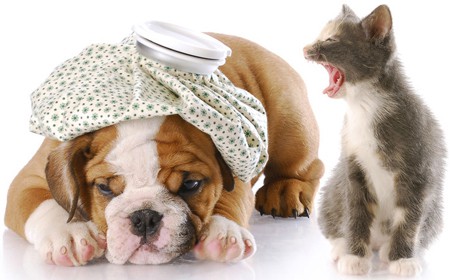Oral hygiene is a very important issue for dogs and cats. The bad breath that is so common in pets is also often the first sign of dental disease. By age 2 it is estimated that 85 percent of dogs and cats have periodontal disease that begins with the accumulation of plaque on the teeth. If not removed, this plaque hardens into tartar, which can then cause sensitive, sore, and swollen gums, gingivitis and tooth problems.
Beyond cosmetic issues, advanced dental disease also has an effect on many internal organs and has been scientifically linked to heart, lung, and kidney problems, which can shorten the life of your pet. In addition to bad breath, any of the following can be noticeable signs of dental problems: excessive drooling, change in eating habits, loss of appetite or weight loss, sensitivity or bleeding around the mouth area, facial swelling, yellow-brown crust of tarter around gum line, or missing, loose, or broken teeth.
Just like with humans, the best way to prevent dental disease in our dogs and cats is with regular dental examinations and professional cleanings. Just to note: non-anesthetic dental procedures are not safe or sufficient to address infections or needed tooth extractions.
 Veterinary medicine is important to keep your pet healthy and happy. As a loving pet owner, it may be helpful to be aware of some common conditions your pet may develop, so we have included a list below with a brief description of each, along with the signs an owner might notice.
Veterinary medicine is important to keep your pet healthy and happy. As a loving pet owner, it may be helpful to be aware of some common conditions your pet may develop, so we have included a list below with a brief description of each, along with the signs an owner might notice.